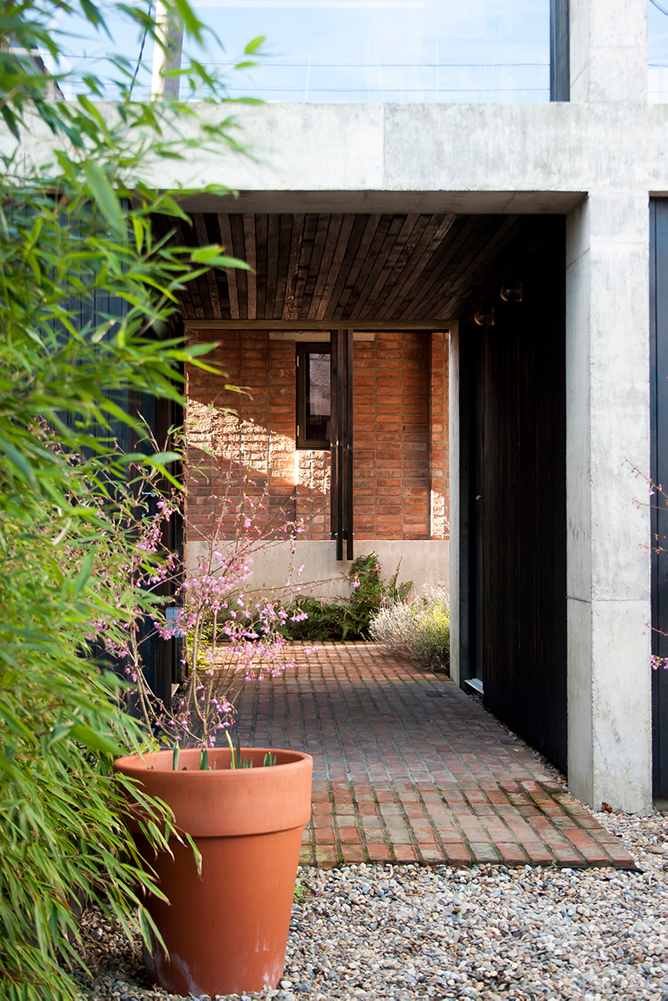Tidying up structures and hard landscaping will let your plants sing without any distractions to the eye.
There are plenty of jobs to get on with in the spring. A lick of paint to the shed, a coat of varnish to benches, a wash of the cloches and greenhouse panes, a debris pick up from the borders, even a judicious spot of pruning and tying in.
But one of the key jobs to address this spring are your paths, paving and patio areas. And like everything with gardening, timing is everything as doing it now will mean less work next year.
Slippery or slimy?
Many paved and pathway areas suffer from moss (cushion-like), algae (green film or powdery deposit), lichen, liverworts or fungi encroachment. Not only an eyesore but also a slipping hazard.
These are a sign of prolonged exposure to moisture so if a wet winter preceded, the spores will be ready to encroach even further as the weather warms up.
Moss brushes off easily whereas lichens and liverworts, which come in a variety of colours and textures, can be left for an aesthetic aging-marker in the stonework or dislodged with a stiff brush.
[adrotate banner="58"]The rest require a treatment, eco or otherwise. Fungi can easily be hoed or brushed up followed by some treatment to minimise resurgence.

For algae, I often apply a spray of vinegar a day or two before I take out the stiff brush or power hose. This way you are not dispersing live spores and regenerative vegetive matter as you clean.
The presence of dark green to blackish jelly-like growths will alert you to the presence of cyanobacteria, and treatments are required here too.
If these growths are a persistent problem, then you will need to think of addressing the lingering damp, perhaps with a patio heater and reducing shaded areas by trimming back overhanging branches or removing a tree or larger shrub.
5 steps to cleaning your paving areas
Clear the area. It is always best to move pots, ornaments and furniture out of harm’s way before starting. Even if you just plan on a gentle wash down, this will give you access to all areas and will prevent accidental damage. Gravel paths and aggregate areas may simply take a raking over, or some hand clearance of weeds and debris, to rejuvenate and set the refreshed tone.
Weed carefully. When weeding in the gaps between paving and stone dressed areas, do not pull up the weed as that will pull soil and other weed seeds to the surface. This creates the ideal conditions for its replacements to flourish.
Best to give them a scissor or secateur snip followed by a hit of boiled water or acidic vinegar. Boiling water cooks the weed and kills off its capacity to photosensitise and grow; just a splash directly from the kettle will do the trick.

This treatment will damage the present weed beyond regeneration capacity and not disturb the seam to invite other germinators. Lemon juice can also help, as well as natural herbicides.
Scrub with soapy water and power hose. Concrete often scrubs up well with a bristled broom or yard brush. Stubborn mucky stains should yield to a bucket of sudsy water and elbow grease, or to a woosh-woosh of the power hose.
When it comes to tiles, pavers and other stone work, some may require more effort and proprietary cleaning products. Terracotta or other tiles may need a gentler touch or indeed a more focused scrub.
Eco clean. Use either lemon juice or white vinegar – their stark pH is often enough to lift the stubborn stains and/or kill off the moss and its spores.
Bleach as a last resort. Depending on the surface and the stain, a propriety patio cleaner can come in handy. Some unyielding stains can be made yield to a glug of domestic bleach added to water. Be careful not to splash plants, furniture fabric, or yourself.



